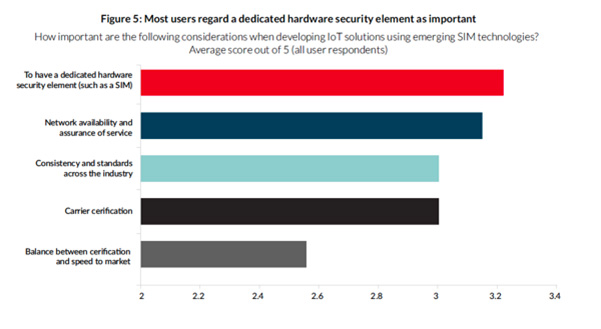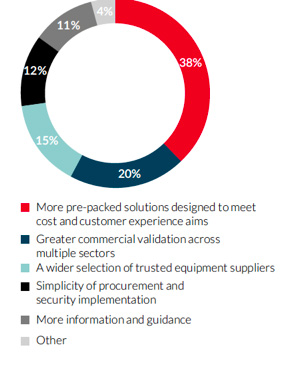By Avishay Shraga, Head of Security Technologies
According to a Mobile World Live survey published a few months ago and sponsored by Sony Semiconductor IL, Kigen and Vodafone Business, adoption of integrated SIM (iSIM) technology and cellular IoT is set to grow rapidly. If you missed it, would like to get some highlights or simply want a refresher, we’ve summarized the key findings in this blog. Feel free to dive in…
In terms of background, the report presents key findings from an online survey of over 750 respondents, to understand market perceptions of Cellular IoT and Integrated SIM (iSIM) technology.
Unsurprisingly, the vast majority of the supplier respondents in the survey regard the new wave of SIM technologies as critical or important.
Here are some key takeaways:
There is strong demand for cellular IoT
79% of businesses adopting IoT technology and 77% of device makers are planning to leverage Cellular IoT within the next 18 months, showing a significant acceleration for massive IoT. As 53% of the device makers in the survey said they are already using the Cellular IoT and another 24% plan to use it in the next 18 months, there will be significant growth in the Cellular IoT in the near future.

The main challenges facing cellular IoT adopters
The highest ranked obstacles to wider adoption of Cellular IoT were connectivity coverage/reliability and the need to develop sustainable business models.

Flexibility to change operators is regarded as important
Almost half of the user respondents said it is important or very important to have the flexibility to change operators during a connected device’s lifespan.
The top benefits of the integrated SIM (iSIM) are its low power consumption and small size
The research found that users value iSIM’s low power consumption and small size, followed by its simplicity and lower cost of ownership.
As iSIM is designed to be simple to deploy, this lowers the barriers to entry and speeds up time-to-market by making it easy for the device maker to harness connectivity.
The simplicity and ease-of-deployment means iSIM is likely to be used to support a broad range of IoT use cases, including asset tracking applications, telematics, smart meters, wearables and monitoring consumer appliances. With its small form factor and low power consumption, iSIM paves the way for a new set of applications.

Standards are important for wide adoption of new technology
Most of the respondents in the survey regard standardisation activity as important for wide adoption of new technology. The majority of Cellular IoT users said they wait until standards work is almost completed and stable before starting implementation of new technologies.
Ecosystem support for new SIM technologies
64% of the supplier ecosystem respondents are considering adopting iSIM technology in their IoT offering in the future, with increasing demand for low cost and prepackaged solutions enabling speed to market.
Large organisations deploying hundreds of thousands of IoT devices at a time will see the benefits of the lower cost of these new technologies. Although the cost advantage of iSIM, on a per unit basis may be small, it can result in major savings for an enterprise IoT deployment.
Security is paramount
Security is the main driver for the mobile ecosystem’s continued investment in SIM technologies. The ecosystem generally regards a dedicated hardware security element as essential.

Call for low cost, convenient solutions
The survey asked all the respondents what would drive greater adoption of low power cellular connectivity. Almost 40% of the respondents selected: More pre-packaged solutions designed to meet cost and customer experience aims.

To sum up, as iSIM simplifies the manufacture of trusted devices and supports remote SIM provisioning across network technologies, such as NB-IoT, it is set to usher in a new chapter of efficient, globally available massive IoT.
>> iSIM & Massive IOT – Full report <<